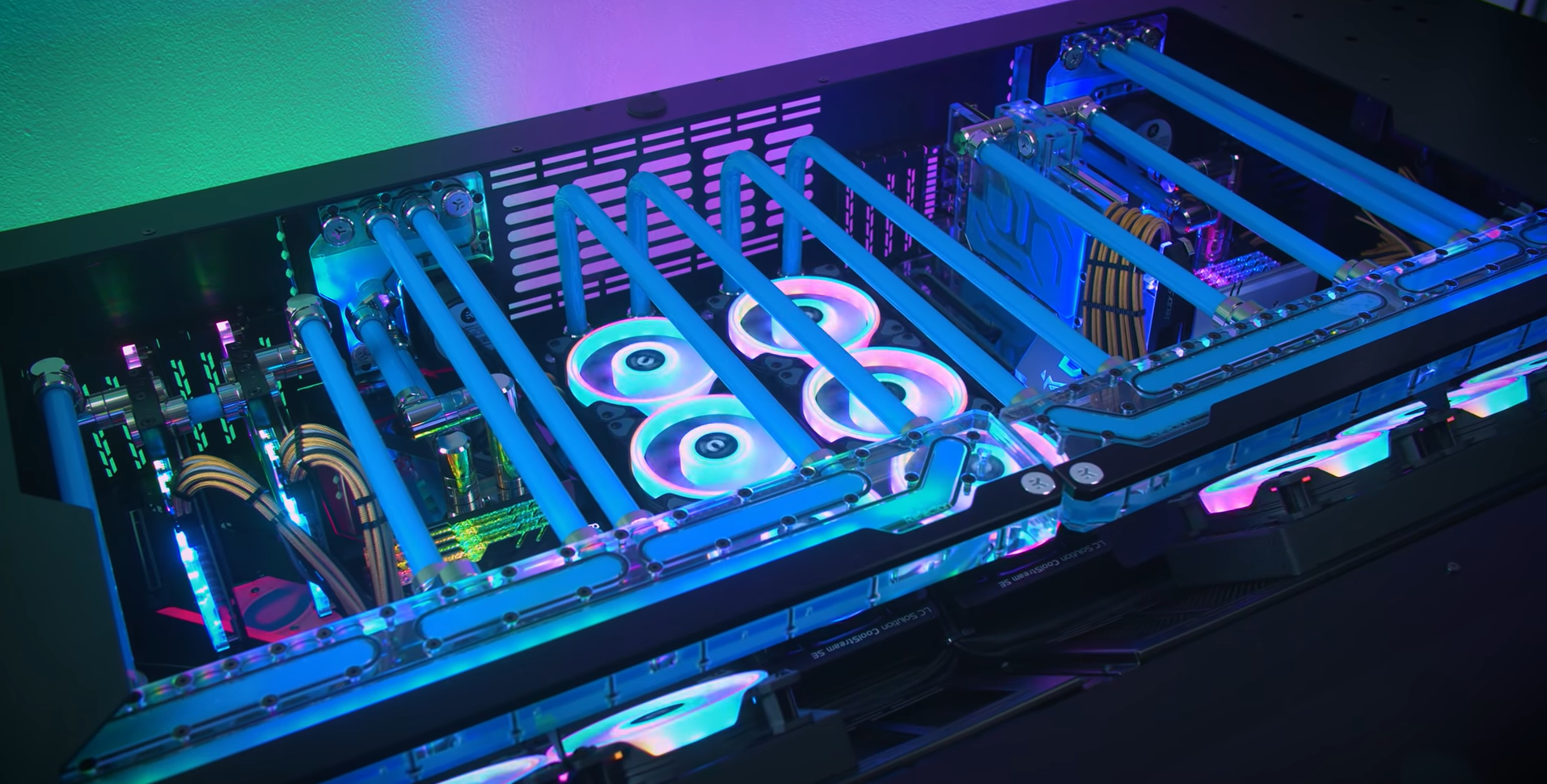Every computer, whether it’s a simple home PC or a high-performance gaming setup, generates heat during operation. Without proper heat management, this can damage your PC’s valuable internal components.
If you’ve purchased a pre-assembled computer from a retailer or manufacturer like HP, your cooling solution is already taken care of. But if you’re building or upgrading a powerful custom PC, you face an important decision:

Should you choose a high-performance liquid cooling system over the traditional air cooling solution?
Before answering, let’s dive into the key differences and factors to consider.
Liquid Cooling vs. Air Cooling: Key Differences
Air Cooling Systems
Air cooling is the traditional method of managing heat. It relies on a CPU fan, a heatsink, and additional chassis and GPU fans to expel warm air.
- Mechanism: The CPU fan works alongside a metal heatsink to draw heat away from critical components. The hot air is then pushed out of the case, keeping the internal temperature stable.
- Performance: As components generate more heat, fans spin faster, producing more noise but ensuring effective heat dissipation.
Liquid Cooling Systems
Liquid cooling systems, in contrast, use coolant-filled tubes, radiators, and water blocks to regulate temperature.
- Mechanism: Liquid circulates through the system, absorbing heat directly from components. It then travels to a radiator where the heat is dispersed before the liquid cools down and recirculates.
- Performance: Liquid cooling is generally more efficient, quieter, and visually appealing, often favored by enthusiasts and gamers.
How Liquid Cooling Works
Liquid cooling offers a cutting-edge solution for thermal management, combining functionality with aesthetics. Here’s how it operates:
Core Components
A standard liquid cooling system includes:
- Pump: Circulates coolant through the system.
- Radiator: Dissipates heat absorbed by the coolant.
- Fans: Aid in cooling the radiator.
- Reservoir: Stores excess coolant.
- Water Blocks: Transfer heat from components to the liquid.
- Hoses: Connect the system and ensure coolant flow.
Working Principle
- Heat Absorption: Thermal paste enhances heat transfer from the CPU/GPU to the water block.
- Coolant Flow: The pump moves coolant through the water block, where it absorbs heat.
- Heat Dissipation: The heated coolant travels to the radiator, where fans disperse the heat into the air.
- Recirculation: The cooled liquid flows back to repeat the process.

Advantages of Liquid Cooling Systems
- Compact Design
Liquid cooling systems are less bulky than air cooling, freeing up space for additional components. - Quiet Operation
Unlike air cooling, which can sound like a jet engine under heavy loads, liquid cooling is much quieter. Noise is limited to the pump and radiator fans, which are barely noticeable. - Targeted Cooling
Liquid cooling allows precise control, focusing on heat-sensitive components like the CPU and GPU. - Efficient Heat Dissipation
Liquid cooling ensures a continuous flow of coolant, preventing the recirculation of warm air and reducing thermal damage. - Cleaner Setup
Air cooling systems tend to accumulate dust over time, while liquid cooling setups remain cleaner, maintaining your PC’s aesthetic appeal.
Considerations When Choosing Liquid Cooling
Custom Loops vs. AIO Systems
- All-in-One (AIO) Systems: Pre-assembled and easy to install, AIOs are affordable and practical for most users.
- Custom Loops: Highly customizable but expensive and complex to set up. These are best suited for enthusiasts who demand maximum performance.
Coolant Options
- Distilled Water: Preferred for its purity, minimizing the risk of blockages.
- Additives: Specialized coolants can improve aesthetics, lower freezing points, and include anti-corrosion or antibacterial properties for enhanced system longevity.
Is Liquid Cooling Worth It?
For casual users, air cooling remains a cost-effective and reliable choice. However, if you’re building a high-performance PC or seeking a quieter, sleeker, and more efficient solution, liquid cooling is the way to go.
Conclusion
A custom liquid cooling system is a dream come true for PC enthusiasts seeking peak performance and aesthetics. For those new to liquid cooling, AIO systems offer an easy and budget-friendly entry point. Whether you aim to keep your processor cool, minimize noise, or simply enjoy a cleaner, more efficient setup, liquid cooling provides a superior alternative to traditional air cooling systems.
https://www.wikihow.com/Build-a-Liquid-Cooling-System-for-Your-Computer





1 thought on “Liquid Cooling vs. Air Cooling – Which One Is Right for Your PC?”
It is actually a great and useful piece of info. I am happy that you just shared this useful info with us.
Please stay us up to date like this. Thanks for sharing.